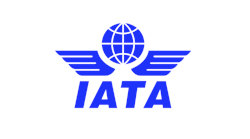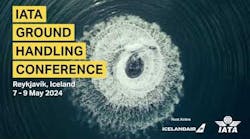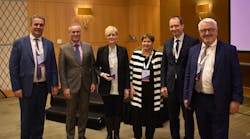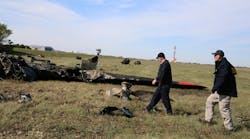Oshkosh, Wisconsin, July 21, 2015 – NASA and the industry team manufacturing the most advanced space exploration system ever built are hosting several events at EAA AirVenture 2015 to answer the questions:
· What will it take to get to Mars?
· What are we doing to make it happen?
NASA’s new vehicle and crew capsule, the Space Launch System and Orion, will carry humans to Mars. Last December, Orion’s crew capsule successfully completed its first flight test, an uncrewed journey 15 times farther into space than the International Space Station. This test was the first step in qualifying Orion to carry astronauts to Mars.
Mars-related EAA AirVenture events include panel discussions (one with Andy Weir – author of The Martian – attending via Skype) and various presentations. The schedule for these events follows:
Wednesday, July 22, 10 a.m.
What: Panel discussion on the questions, “How will humans survive the journey to Mars? And stay alive when they get there?”
Where: Forums Stage 7
Who: Andy Weir - Author of the New York Times bestseller The Martian (soon to be a Hollywood movie), Kent Rominger - Five-time shuttle astronaut and current vice president of strategy and business development for the Propulsion Systems Division of Orbital ATK, Larry Price - Orion deputy program manager for Lockheed Martin and Keith Reiley - ISS Manager for Exploration and Utilization for Boeing
Wednesday, July 22, 11:30 a.m.
What: Discussion with the people who are right now designing the optimal habitat for long-term habitation in on an alien planet. What could go wrong?
Where: Forums Stage 9
Who: Keith Reiley, currently Boeing’s ISS Manager for Exploration and Utilization, and Kavaya Manyapu, who has worked on the Orion deep space capsule and served as a crewmember for two analog Mars missions organized by Mars Society. She is now the Pad Abort Flight Test Spacecraft Lead at the Boeing Company building NASA’s next Commercial Spacecraft, CST-100.
Thursday, July 23, 10 a.m.
What: Discussion on what NASA is doing to ensure humans will soon explore deep space – using the Space Launch System and Orion spacecraft.
Where: Forums Stage 4
Who: Susan Baggerman – NASA Health and Medical Technical Authority to the Orion Program Office; Keith Hefner - Associate Program Manager of NASA's Space Launch System (SLS) Program Office at the Marshall Space Flight Center; and Jeff Angermeier – NASA Senior Program Planning Manager, Ground Systems Development and Operations Program
Thursday, July 23, 2:30 p.m.
What: Panel discussion on “Marching to Mars”
Where: Forums Stage 7
Who: Charlie Precourt – Four-time shuttle astronaut and vice president and general manager of Propulsion Systems Division (Orbital ATK); Jeremy Redden - Engineer for the Space Launch System’s Solid Rocket Boosters (Orbital ATK); Iylene Patino, Structural Test Engineer on the SLS Program (Boeing); Larry Price - Orion deputy program manager (Lockheed Martin); and Kathryn Crowe – Propulsion systems engineer for the Space Launch System’s RS-25 engine (NASA Marshall Space Flight Center)
Thursday, July 23, 8 p.m.
What: Presentations and Discussion on Spaceship HD
Where: Theater in the Woods
Who: Larry Price – Orion deputy program manager (Lockheed Martin); and Susan Baggerman – NASA’s Health and Medical Technical Authority to the Orion Program Office will demonstrate how NASA’s Orion spacecraft is designed and built to take humans to Mars and bring them safely home.
Friday, July 24, 10 a.m.
What: Panel Discussion on Rocket Women!
Where: Forums Stage 9
Who: Astronaut Abby – Aspiring astronaut; Susan Baggerman – NASA’s Health and Medical Technical Authority for Orion; Janica Cheney – Director of Safety and Mission Assurance at Orbital ATK; Kathryn Crowe – NASA Propulsion Systems Engineer; Sandra Magnus – Astronaut on Atlantis, Endeavour and the International Space Station; and Iylene Patino – Structural Test Engineer on the SLS Program at Boeing
Friday, July 24, 2:30 p.m.
What: Presentations on finding life on other worlds.
Where: Forums Stage 9
Who: Alberto Conti, Northrop Grumman; and Harley Thronson, Senior Scientist for Advanced Concepts, Astrophysics Science Division, Science and Exploration Directorate at NASA Goddard Space Flight Center
For interview opportunities with NASA representatives and senior executives from Orbital ATK, Boeing and Lockheed Martin, contact Kay Anderson at 435-230-2787.
Background
· The President of the United States and Congressional leadership has concluded that deep space is the future destination for human exploration.
· SLS and Orion have unmatched combination of mass, volume and speed capable of delivering humans and cargo to deep space faster, safer and more affordably than any other existing or proposed alternatives.
· Orion’s first mission, called Exploration Flight Test-1 (EFT-1) successfully flew in December 2014. The spacecraft traveled 3,600 miles—the farthest a human-rated spacecraft has ventured into space in more than 40 years—and was a resounding success.
· EFT-1 provided engineers with critical data about Orion's heat shield, flight systems and capabilities to validate designs of the spacecraft that will carry humans to explore and study deep space destinations.
· The Space Launch System (SLS) program, which is mid-way through its development process, is on schedule, within budget, and will be ready for launch in 2018.
· SLS uses existing or in-development hardware and engages the U.S. aerospace infrastructure and workforce, enabling NASA to deliver this capability in less than 7 years — faster than either Apollo Saturn or space shuttle development.





